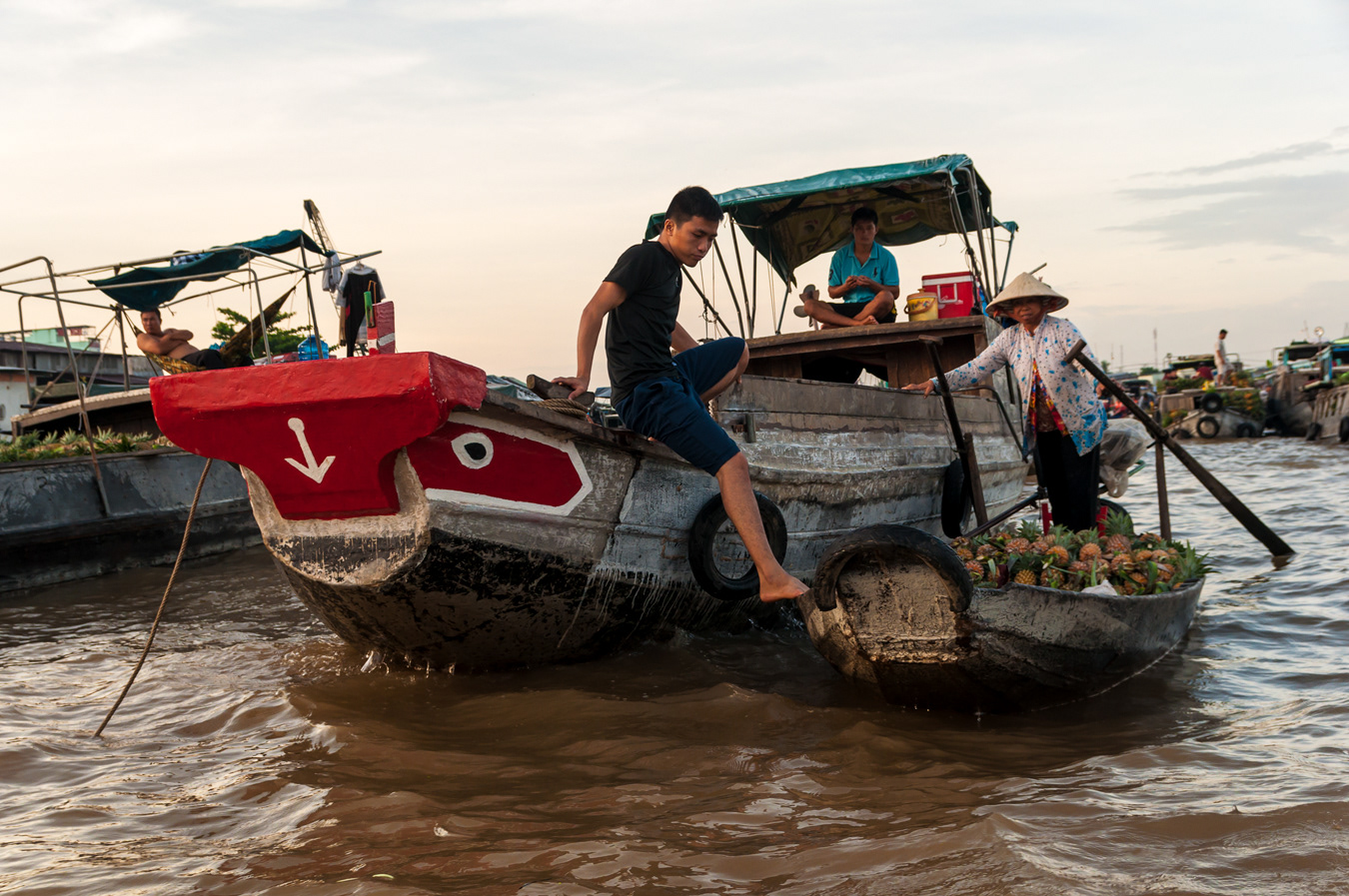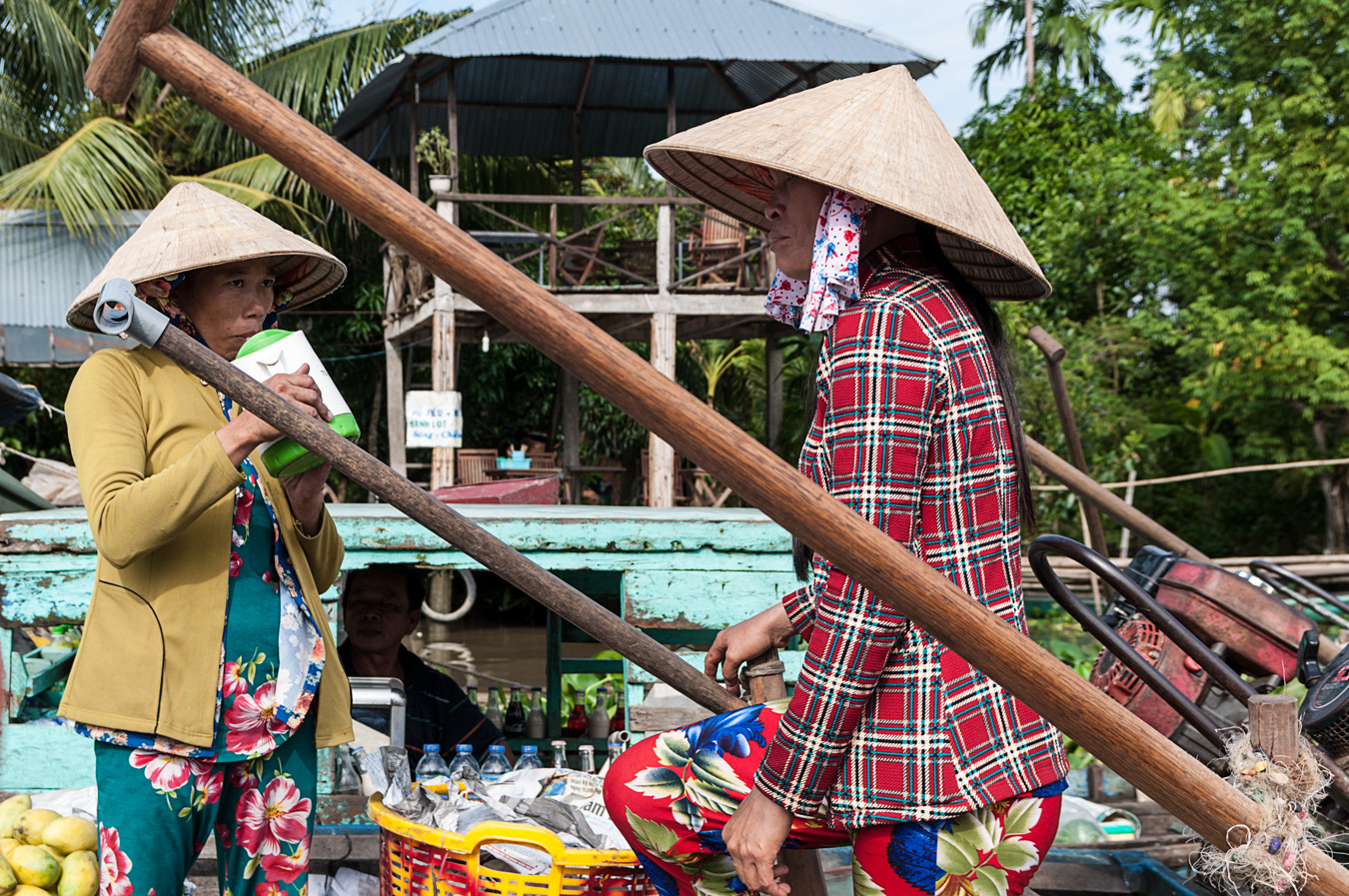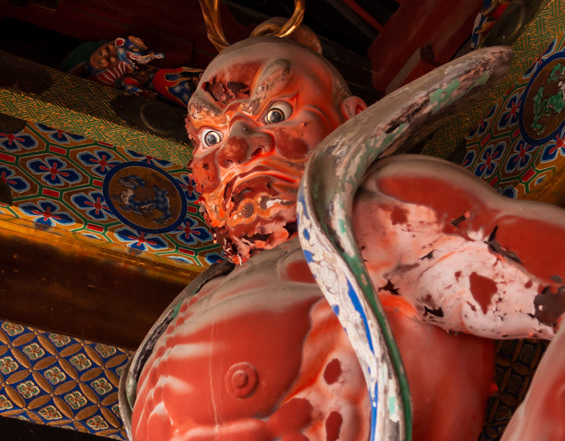Dominated by the southern flood plains, the delta is one of Asia's largest wetlands. Originally part of Cambodia, a steady influx of Vietnamese settlers eventually resulted in Vietnam annexing the area early in the 19th century. Many Cambodians still consider the region as their land however, referring to it as Kampuchea Krom (Lower Cambodia).
The Mekong river and its many offshoots are a vital source of food and commerce for the Vietnamese communities which occupy the region. Life is lived on and around the rivers. The river network provides fish and irrigates the rice fields. Markets float on the water and cargo and passengers are transported around the region.
The wider Mekong Basin, reaching back into China, is second only to the Amazon in its rich biodiversity. New species of plants, mammals and fish are continually being discovered. This fragile biosphere is increasingly under threat, with human encroachment, pollution and climate change endangering many species and disrupting the delicate ecosystem. The unique qualities and character of the Mekong Delta and the life it supports may be irreversibly lost in the coming decades.
Early morning sees many parts of the Mekong river and its distributaries come to life with legions of boats and barges, rivers taking the place of roads for most communities. Many of the larger craft have eyes painted on their bow to ward off water-borne beasts, ensure home is always found and to bring good luck.


Floating markets are a centuries-old use of the delta's waterways. One of the largest and most renowned is Cai Rang, near the city of Can Tho. Trading starts at 5am with sample goods tied to long poles to advertise what each boat sells.







Large, flat-bottomed barges use the river to ferry goods and materials around the delta and out to coastal ports. Many carry sand dredged from the riverbeds, used for construction in Saigon and land reclamation in Singapore. Sadly, this removal of sand is eroding the landscape and increasing its vulnerability to flooding.
Life on the water is also a way to relax and unwind, for visitors as well as locals. Sampans and cruise boats weave their way through the network of rivers and tributaries. Locals often take advantage of the peace and solitude found by drifting with the river's flow.


Houses are often built right next to the river's edge, with some even running out over the water, supported by wooden stilts. Many people live on their boats, abandoning the land altogether, their place of business doubling as their home.
Ferries criss-cross the rivers, providing essential links between communities and access to the islands that sporadically appear along the course of many of the larger rivers.
Island on Ham Luong River, Ben Tre









